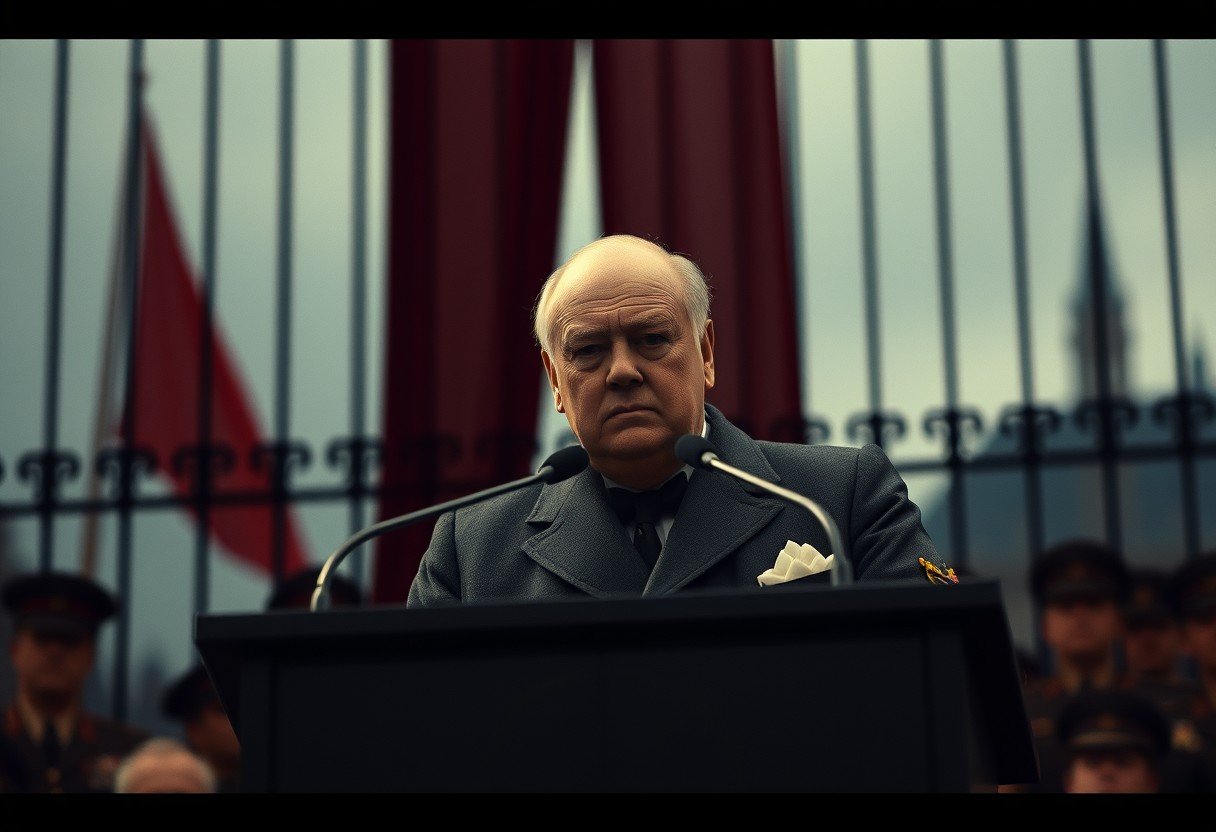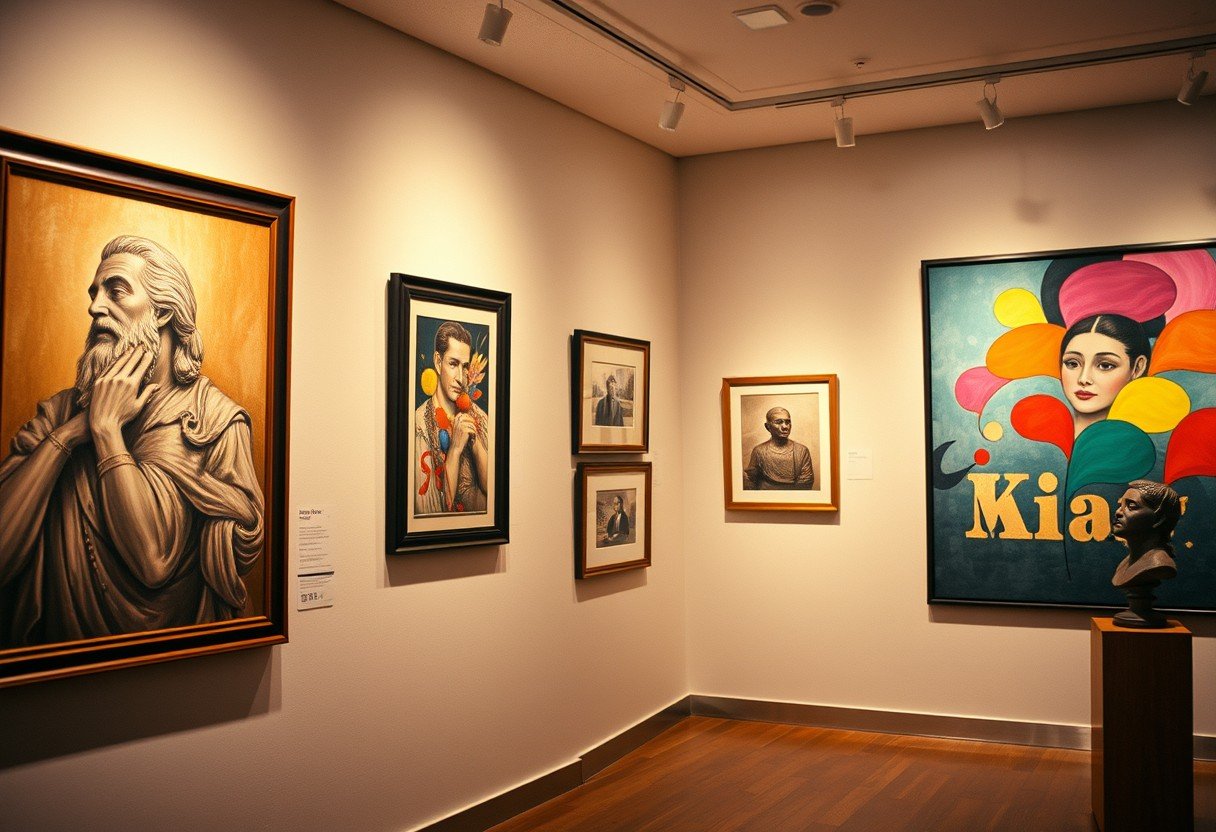In 1946, a powerful speech by a world leader introduced a phrase that would define an entire era. British statesman Winston Churchill, speaking in Fulton, Missouri, popularized the term “Iron Curtain” to describe the growing division between the democratic West and the Soviet-controlled East. This moment didn’t just give a name to the Cold War’s central conflict; it helped shape the geopolitical landscape for the next four decades, creating a clear and chilling image of a continent split in two.
The Origins of a Famous Phrase
While Winston Churchill made the term “Iron Curtain” famous, he didn’t invent it. The phrase had been used in different contexts before, often to describe a separation or an impenetrable barrier. However, these earlier mentions lacked the political weight and global significance of Churchill’s use.
It was Churchill who took this relatively obscure metaphor and placed it at the center of international political discourse. His powerful delivery and the timing of the speech, just after World War II, transformed the phrase into a symbol of the ideological struggle between communism and democracy.
Prior to 1946, any reference to an “iron curtain” was largely anecdotal. Churchill’s genius was in recognizing its potential to vividly capture the anxieties of the post-war world and the reality of Soviet dominance in Eastern Europe.
Setting the Stage in Fulton, Missouri
On March 5, 1946, Winston Churchill delivered his landmark address, officially titled “Sinews of Peace,” at Westminster College in Fulton, Missouri. The choice of venue was significant. Speaking in the American heartland, with U.S. President Harry S. Truman in attendance, emphasized that his message was directed as much to the American people as it was to the world.
The audience consisted of students, faculty, and local leaders, but Churchill’s words were intended for a global stage. He aimed to awaken the West, particularly the United States, to the threat posed by the Soviet Union’s expansionist policies in Europe.
What “The Iron Curtain” Actually Meant
At its core, Churchill’s speech was a stark warning about the division of Europe. He painted a clear picture of a continent split by Soviet influence, where freedom and democracy were being suppressed behind a metaphorical barrier.
The central message was that an “iron curtain has descended across the Continent.” This single phrase powerfully encapsulated the new reality of post-war Europe. Churchill highlighted several key themes in his address:
- A warning about the expansion of Soviet power and its control over the capitals of Central and Eastern Europe.
- A call for a “special relationship” between the United States and the British Commonwealth to stand together against tyranny.
- An urgent plea for Western democracies to remain vigilant and strong to protect peace and freedom.
By using the “Iron Curtain” metaphor, Churchill effectively framed the emerging conflict as a struggle between two opposing worlds. One side represented liberty and democracy, while the other was characterized by totalitarian control and oppression. This clear distinction helped galvanize public opinion in the West.
How the World Reacted to Churchill’s Warning
The speech did not receive universal praise. In fact, the reactions were deeply divided, reflecting the very split Churchill was describing. In Great Britain and the United States, many were alarmed by the confrontational tone, as they still viewed the Soviet Union as a recent wartime ally. Some critics accused Churchill of warmongering.
However, many others agreed with his assessment, seeing it as a necessary and honest appraisal of the geopolitical situation. Over time, his words proved prophetic and helped shape Western policy.
The Soviet Union’s reaction was swift and hostile. Soviet leader Joseph Stalin condemned the speech just days later, comparing Churchill to Adolf Hitler and accusing him of being a warmonger. The Kremlin dismissed the address as inflammatory rhetoric designed to incite conflict. This sharp denial only served to reinforce the very division Churchill had described, further deepening the growing chasm between the superpowers.
The Speech’s Lasting Impact on the Cold War
Churchill’s “Iron Curtain” speech is widely considered a catalyst for the Cold War. It hardened attitudes on both sides and marked a definitive end to the Grand Alliance of World War II. The speech helped solidify the U.S. policy of containment, which aimed to prevent the spread of communism.
Following the speech, the world quickly polarized into two distinct camps. This led to the formation of powerful military alliances that defined international relations for decades.
| Western Bloc Alliance | Eastern Bloc Alliance |
|---|---|
| North Atlantic Treaty Organization (NATO), formed in 1949. | The Warsaw Pact, formed in 1955. |
| Led by the United States and included Western European nations. | Led by the Soviet Union and included its Eastern European satellite states. |
This division fueled an arms race, proxy wars, and a constant state of political and military tension that lasted until the fall of the Berlin Wall in 1989 and the eventual collapse of the Soviet Union.
The Legacy of the Iron Curtain Today
Even though the physical and political barriers of the Cold War have fallen, the phrase “Iron Curtain” remains a powerful part of our historical vocabulary. It serves as a potent reminder of the dangers of ideological division and the fragility of peace.
The term is often used in cultural references, from books to films, to symbolize separation and oppression. For Europe, the legacy of the Iron Curtain continues to influence politics and relationships. The economic and social disparities between former East and West still linger, and the memory of the division shapes modern alliances and diplomatic caution.
Ultimately, the legacy of the Iron Curtain is a testament to the power of a single phrase to define an era and shape the course of history.
Frequently Asked Questions
Which statesman popularized the term “the Iron Curtain”?
The term was popularized by former British Prime Minister Winston Churchill. He used it during his famous “Sinews of Peace” speech on March 5, 1946.
Where did Winston Churchill give his Iron Curtain speech?
Churchill delivered the speech at Westminster College in Fulton, Missouri, in the United States. U.S. President Harry S. Truman was present for the address.
What did the Iron Curtain represent?
The Iron Curtain was a metaphor for the ideological and physical boundary that divided Europe after World War II. It separated the democratic nations of Western Europe from the communist countries of Eastern Europe controlled by the Soviet Union.
How did the Soviet Union react to the speech?
The Soviet Union reacted with anger, denouncing the speech as hostile and warmongering. Soviet leader Joseph Stalin accused Churchill of trying to incite war against the USSR.
Was the Iron Curtain speech the beginning of the Cold War?
While tensions were already rising, Churchill’s speech is widely seen as a key moment that publicly defined the conflict. It is considered a major catalyst that marked the beginning of the Cold War era and shaped the confrontational rhetoric between the West and the Soviet bloc.









Leave a Comment